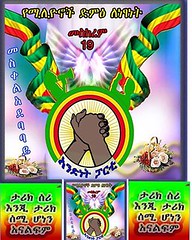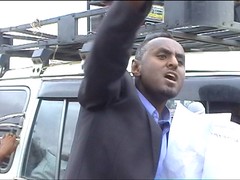Minister of International Development Erik Solheim refutes claims Norway’s new refugee return deal with Ethiopia is linked to foreign aid amongst concerns it is being misspent
. Erik Solheim Photo: Tore Berntsen/Norwegian government
 Uncertainty
Uncertainty
Whilst other countries, including Sweden, have recently reduced the amount they give to the country on grounds of human rights violations, Norway has agreed to increase its aid by an annual figure of up to 350 million kroner.
In Monday’s article on The Foreigner, it was reported the Norwegian Organisation for Asylum Seekers’ Ann-Magrit Austenå said, “I do not think it is a coincidence that the return agreement with Ethiopia has come into effect at the same time we see an increase in the flow of aid.”
Erik Solheim told Klassekampen today, “There is absolutely no connection, as I see it.”
“When we have increased development assistance, it is because Ethiopia is one of Africa’s biggest success stories, both in terms of economic and social conditions. Amongst other things, it is one of the countries in the world that has done most to meet the Millennium Development Goals.”
Several international organisations, including Amnesty, have criticised Norway for its cooperation with Ethiopia, however Jailing and torture of political opponents is common, and Amnesty has launched an international campaign with a petition supporting Norway’s Ethiopian asylum seekers. The organisation is concerned what will happen to those who have expressed opposition to the regime whilst in Norway upon their return.
Without rights
At the same time, Human Rights Watch (HRW) alleges aid is helping the abuse of indigenous groups. The government is relocating 70,000 from the western Gambella region by force to new villages under its so-called “villagization” programme.
In its report “‘Waiting Here for Death’: Forced Displacement and ‘Villagisation’ in Ethiopia’s Gambella Region”, it alleges these have no adequate food supplies, farming land, healthcare, and educational facilities. Villagers opposed to the transfers have also been repeatedly threatened, assaulted, and faced arbitrary arrest.
Jan Egeland, Norwegian HRW Europe director and former director of the NUPI (Norwegian Institute of International Affairs), said in a press statement, “The Ethiopian government’s villagization program is not improving access to services for Gambella’s indigenous people, but is instead undermining their livelihoods and food security.”
“It seems that the donor money is being used, at least indirectly, to fund the villagization program. Donors have a responsibility to ensure that their assistance does not facilitate forced displacement and associated violations.”
Talks
Declaring to Klassekampen that HRW’s criticism “is something we have taken very seriously”, Minister Erik Solheim says Ethiopia needs more aid “to become even better. Population wise, it is Africa’s second-largest country. It is an important country, and many people are still living in poverty. Whilst Ethiopia was the symbol of famine in the 80’s, the country has now taken many steps to prevent poverty.”
“In addition, they are the leading country in Africa when it comes to combating climate change, and this is an important matter for us. They are also important to find a peaceful solution to the situation in Somalia and Sudan. This must be balanced against human rights abuses taking place in Ethiopia. We’ll be taking this up with them,” he concluded.
Norway’s asylum seeker deal with Ethiopia came into effect just recently. Voluntary returnees were given 40,000 kroner each until the 15th March, whereas refugees now face forcible deportation. This includes approximately 450 children living in state-run facilities that have been born as well as raised here
Posted on March 21, 2012, in AFRICAN NEWS, ETHIOPIA ENGLISH, WORLD NEWS and tagged Africa, Ethiopia, Human rights, Millennium Development Goals, Norway, Norwegian Institute of International Affairs. Bookmark the permalink. Leave a comment.
![ETHflag_1__1_[1]](https://ethioandinet.files.wordpress.com/2012/09/ethflag_1__1_1.gif)






Leave a comment
Comments 0